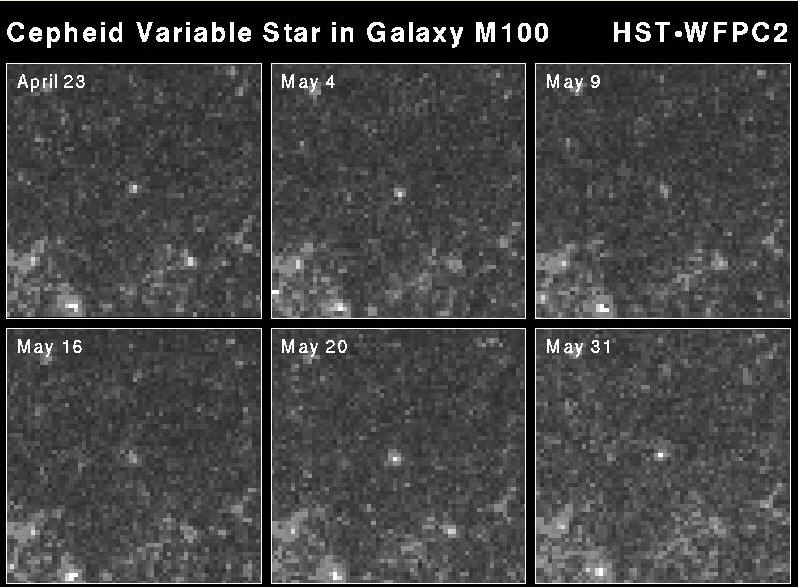Astronomy 201
Assignment #1: Due January 30, 2018
Please answer the following questions. Consult the linked practice sections of the on-line course notes as indicated. Each question is worth 3 marks so write a brief paragraph (but not longer) explaining as concisely and completely as you can. If mathematical calculations are required be sure to show your work and explain what you are doing.
- How does an H-R diagram make it clear that giant stars are larger than main-sequence stars of the same temperature? (Fall lecture 8.3)
- Why do we think halo stars and globular clusters formed much earlier than stars found nearby - the Pleiades for example? (Lecture 12.2)
- Population II stars still have some metal content. Why is this problematic and suggests the possibility of an even older population of stars?(Lecture 12.2)
- Explain why the presence of hot young stars on the edges of spiral arms supports the density wave theory for spiral structure.(Lecture 12.3)
- Why is the discovery of rapidly varying x-ray emission from Sagittarius A consistent with idea that there is a super massive black hole at the center of the galaxy? (Lecture 12.4)
Problems (6 marks each):
- Complete the following table:
| Star |
m |
M |
Distance Modulus |
d (pcs) |
| Vega |
0.03 |
|
|
7.68 |
| Rigel |
0.13 |
|
7.97 |
|
| Algol |
2.12 |
-0.07 |
|
|
| Maia |
3.87 |
|
|
120 |
- Shown below is the spectrum of a star for which m = 6.8. Explain why you think this is an A0 star. If we assume that it is a main-sequence star calculate its distance from us. What if the star was not a main-sequence star but was instead a supergiant - how would the distance that you found change?

- The Hubble Space Telescope (HST)image shown below is a series of images of a cepheid variable in the galaxy M100. You may assume that this is a population I Cepheid and the Hubble data indicates that the apparent magnitude varies between 24.5 to 25.3 with a period of 51.3 days. Use this to estimate the distance to M100. If there was (unknown to you) obscuring dust between us and M100, how would this affect your distance determination?



